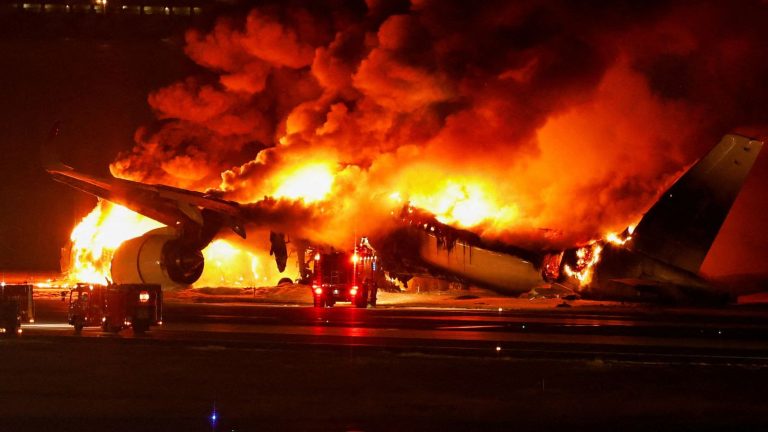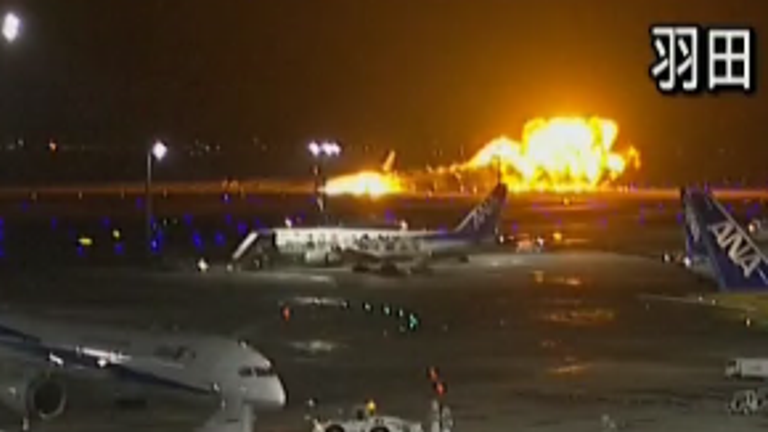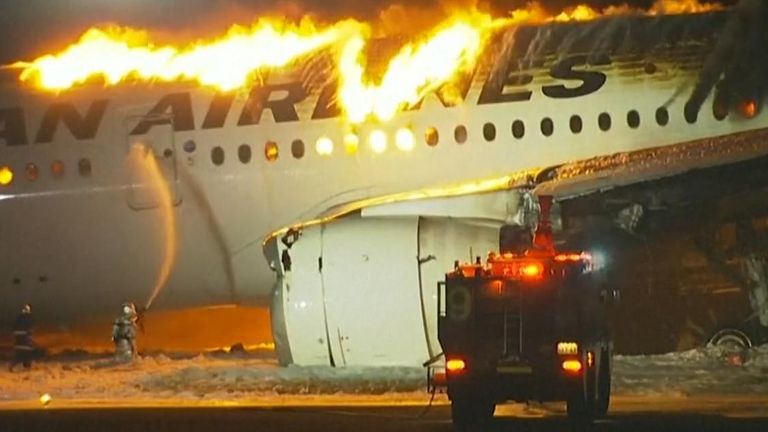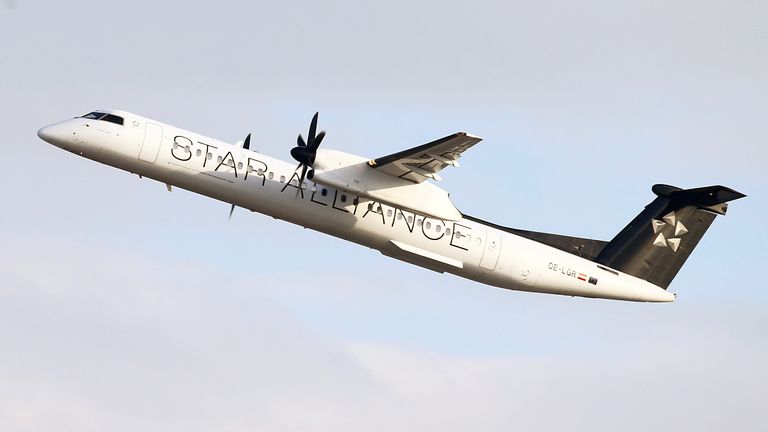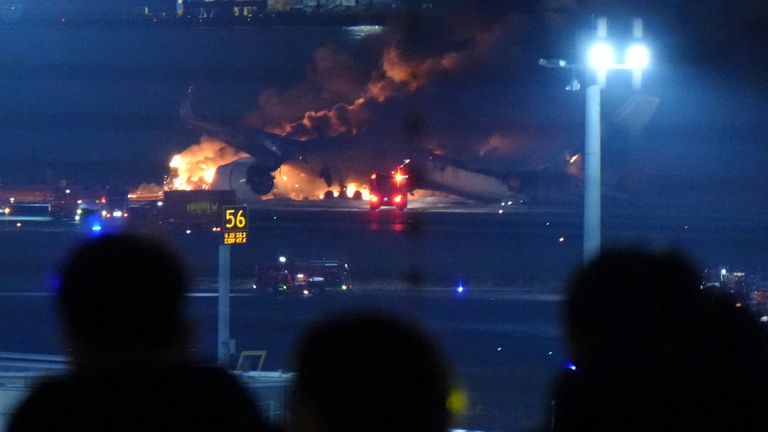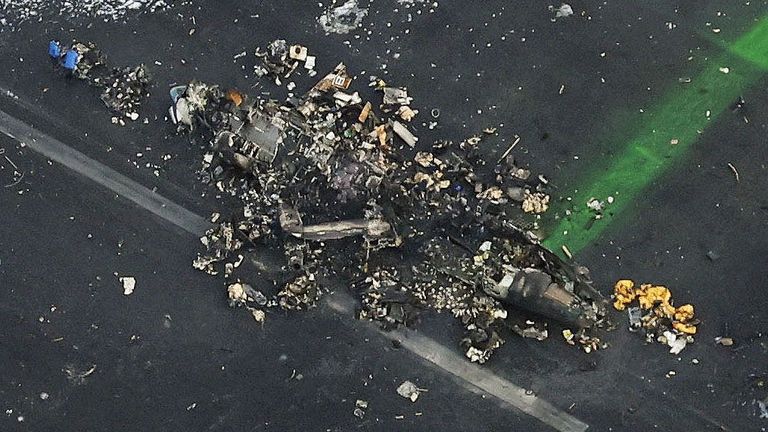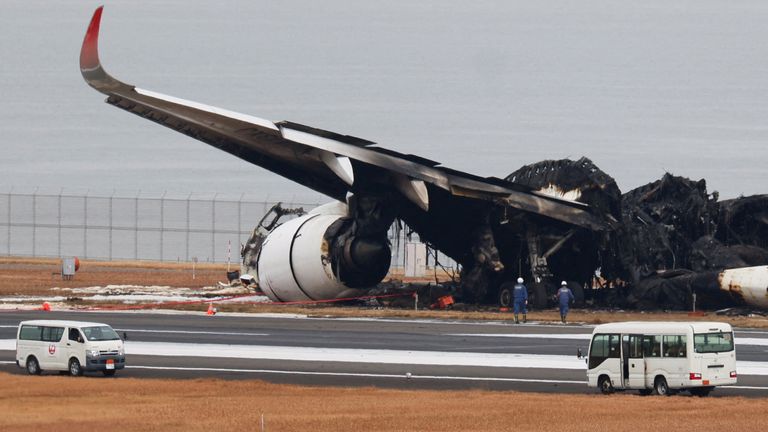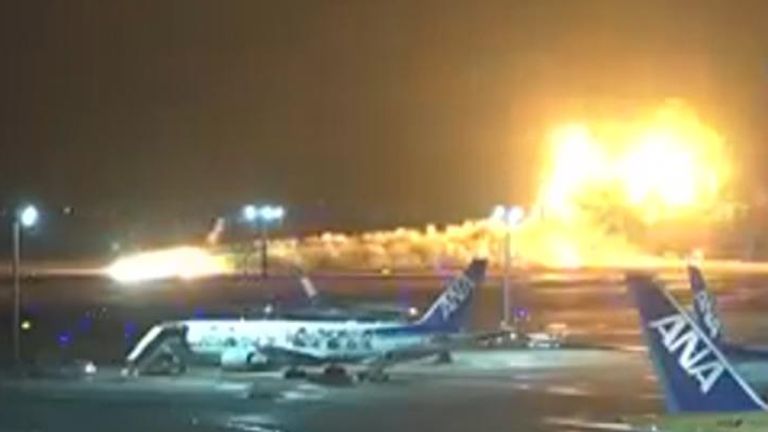Behind the scenes, investigators are trying to figure out how two planes managed to collide and catch fire — killing five people — at Tokyo's Haneda Airport.
In dramatic footage taken from the scene of the accident, A The Japan Airlines plane caught fire It moved along the runway in a burning inferno after colliding with the Coast Guard plane.
Details are now emerging with what air traffic transcripts indicate The Coast Guard plane was not authorized to take off When the accident happened.
Japan has already suffered a tragedy yet Earthquake on New Year's DayDozens of deaths and warnings of aftershocks.
Haneda Airport is one of the busiest airports in Japan, and many people travel during the New Year holiday. As details continue to emerge from the scene, here's everything we know about the plane collision so far.
What aircraft were involved?
Japan Airlines domestic flight 516, an Airbus A350, took off from Shin Chitose Airport on the northern island of Hokkaido, arriving at Haneda Airport in Tokyo on the main island of Honshu. It was carrying 379 people, including the crew.
The collision also involved Coast Guard aircraft MA722, a De Havilland Canada DHC-8-315Q MPA – also known as a Bombardier Dash-8 – which had six people on board including the pilot.
It was preparing to travel to the coastal city of Niigata to provide aid to those affected by the earthquake at the time of the collision, which occurred at 5.47pm local time (8.47am in the UK).
The Bombardier Dash-8 is typically a short-range aircraft with about 50 to 80 seats, says pilot and aviation consultant Tim Atkinson. He told Sky News they are “nothing like the size of an A350 at all” but are “large enough to fit a significant amount of fuel on board”.
Japan Airlines told Kyodo News that the passenger plane either collided with a Coast Guard plane on the runway or taxiway after landing.
Passengers and crew
Japan Airlines said that all 367 passengers and 12 crew members on the passenger flight were evacuated safely.
Kyodo reported that among the passengers were eight children.
“We've just witnessed a miracle,” former commercial pilot Roger Whitfield told Sky News, as footage from the scene was shown. “The way they got all those passengers off that plane is almost unbelievable.”
While the pilot of the Coast Guard plane was able to evacuate, the other five crew members were killed, NHK reported.
The Japanese Minister of Transport confirmed that the pilot of the Coast Guard plane was injured in the collision.
What caused the collision?
While the investigation has only just begun, it has been suggested that the Coast Guard plane is the plane that should not have been on the runway.
Transcripts of traffic control instructions appear to show that the Japan Airlines flight was given permission to land, while the Coast Guard plane was told to move to a holding point near the runway.
Japan Airlines said in a statement on Wednesday that its planes recognized the landing permission from air traffic control and repeated it before landing.
But a Coast Guard official said that the pilot of the small plane said he entered the runway after obtaining permission.
Atkinson said a busy airport in the evening presented a “very visually challenging environment” for all involved – from air traffic controllers to pilots and vehicle drivers – with “an enormous number of lights of different colours, some of which are flashing”.
“When one approaches a runway at night, it is often very difficult to perceive those small markings, for example, for a relatively small aircraft,” said Atkinson, who is also an aviation accident investigator.
Flight Radar 24, which tracks flights around the world, provided more details about the collision, saying the Coast Guard plane was not equipped with a modern ADS-B transceiver.
ADS-B transceivers are used to transmit highly accurate information about the aircraft's position to ground controllers and directly to other aircraft, and are more accurate than using traditional radar monitoring.
What does the footage show?
A video clip broadcast on local television showed a large explosion of fire and smoke from the side of the Japan Airlines plane as it was moving on the runway.
The area around the wing then caught fire, and footage an hour later showed the plane completely engulfed in flames.
As firefighters struggled to control the fire, the Japan Airlines plane appeared to split in two.
The Ministry of Land, Infrastructure, Transport and Tourism said it was investigating the incident.
What did the survivors say?
A passenger posted footage from inside the Japan Airlines plane as it landed on the runway. The clip then showed people being evacuated from the bottom of a cliff.
Some passengers also spoke out after their ordeal.
William Manzione, who was on the plane with his wife and children, He told Sky News his family had dodged a “really big bullet”..
He remembers feeling a “tremendous impact” before a “louder boom” as the plane banked toward its nose and the cabin crew began shouting in Japanese.
Manzione did not realize the true extent of the crash until after his family left the plane.
He said: “When I got out of my seat I started to see flames coming out of the windows, and then I realized this is not good.
“When I saw the inflatable slide, I understood that it was bad. I took my son and went down the slide and we met my other relatives. Then I turned around and saw the plane with the front of the plane completely destroyed and flames all over the slide. Behind.
“Then I started to realize that it was much bigger than what I felt when I landed. I didn't realize there was another plane involved, I was shocked by that.”
what happened after that?
Operations have resumed at Haneda Airport and an investigation is underway into what exactly happened on the runway.
Agencies in France, where the Airbus was built, and in the United Kingdom, where its Rolls-Royce engines were built, are assisting Japan's Safe Transportation Board.
Meanwhile, Tokyo police are investigating whether professional negligence contributed to the accident, according to local media.
Tetsu Saito, Japan's Minister of Transport, said officials were doing their best to prevent any delays in earthquake relief operations.

